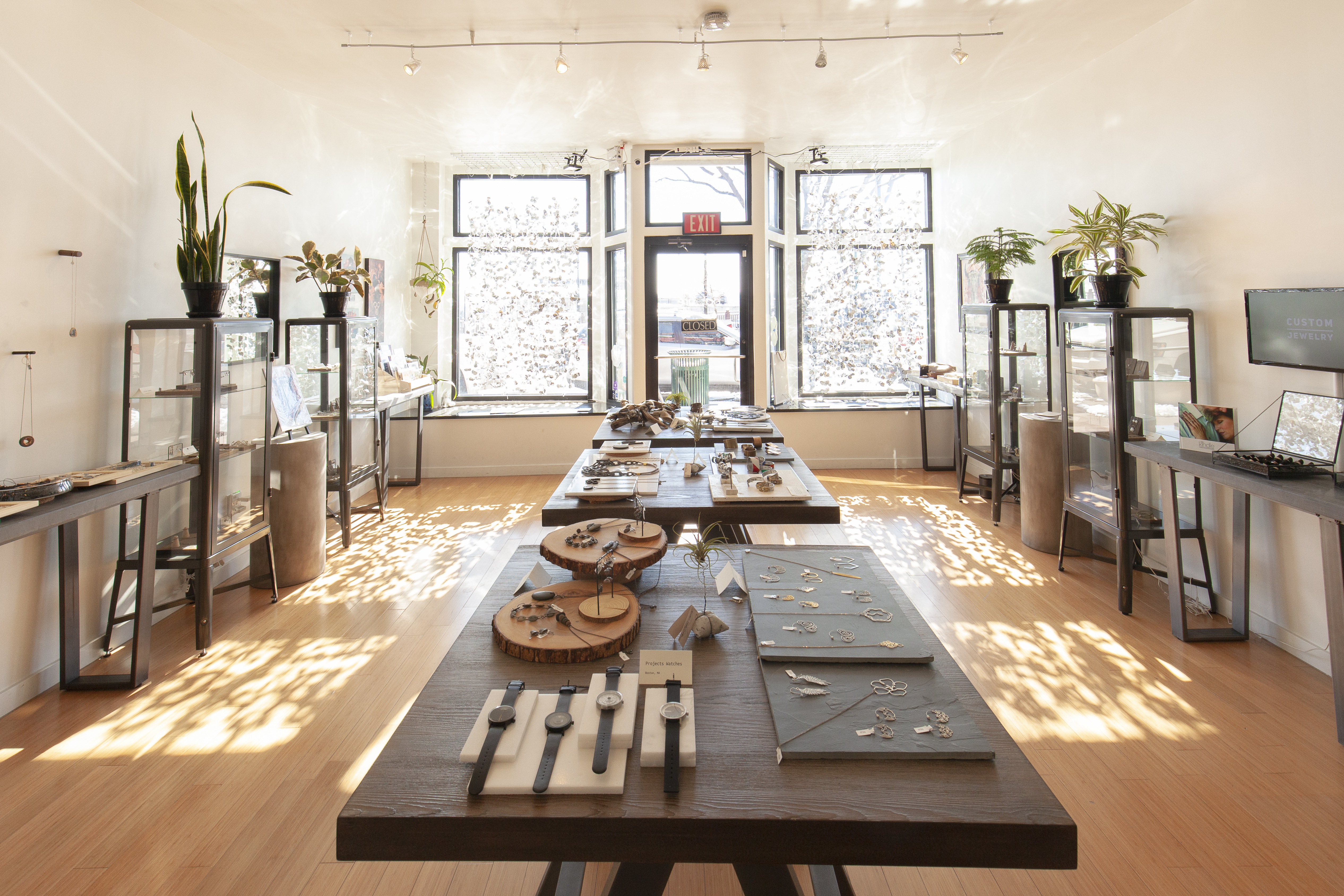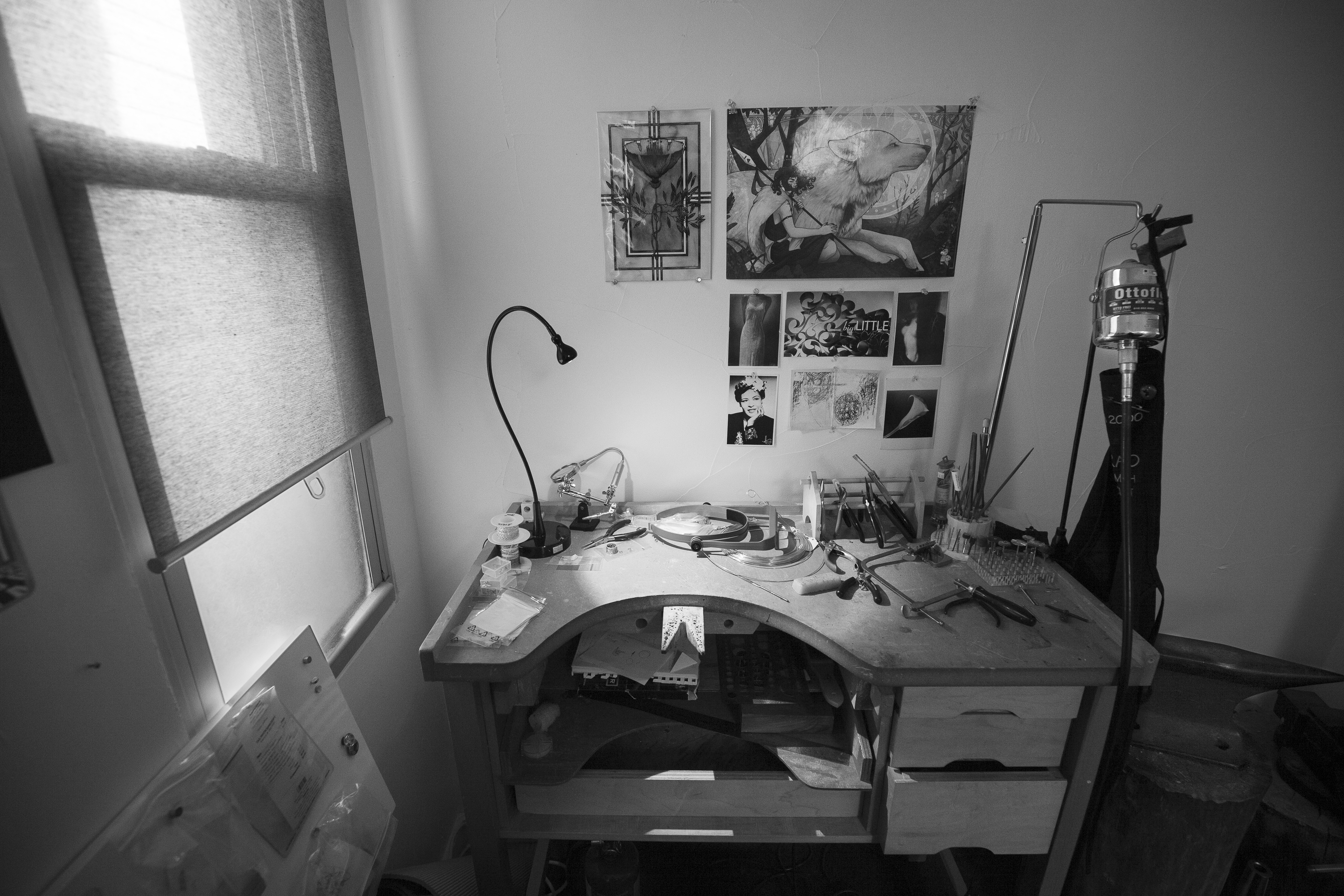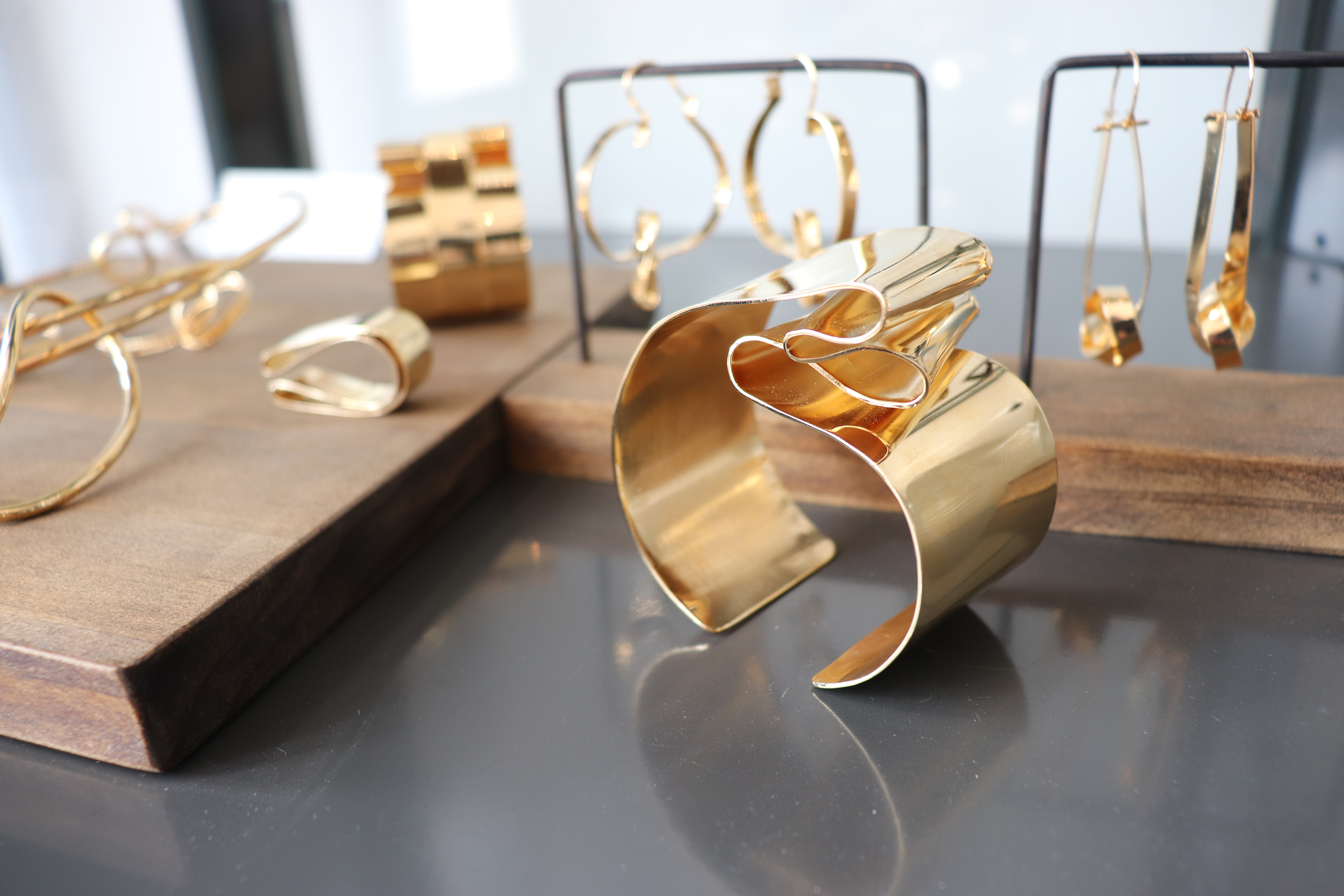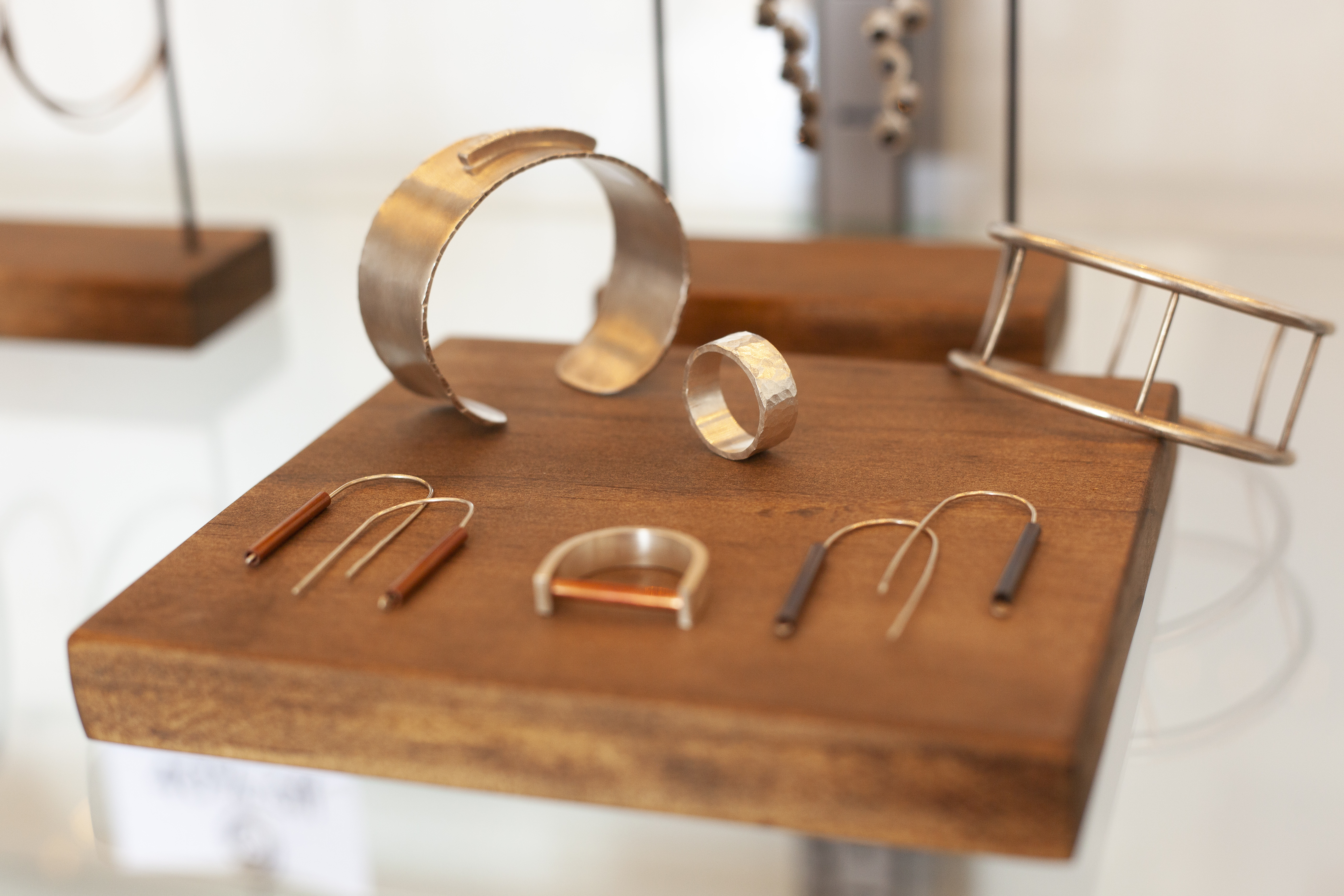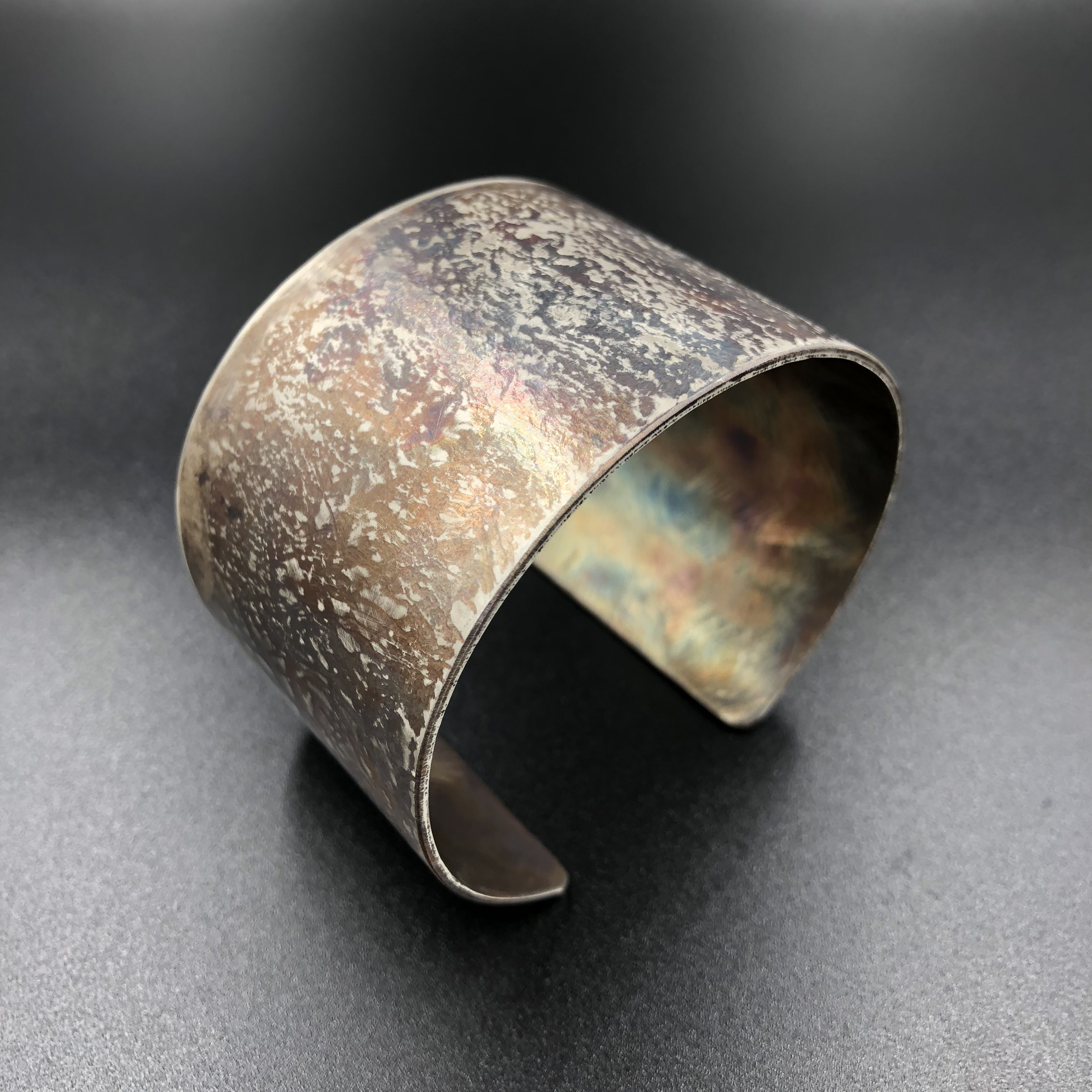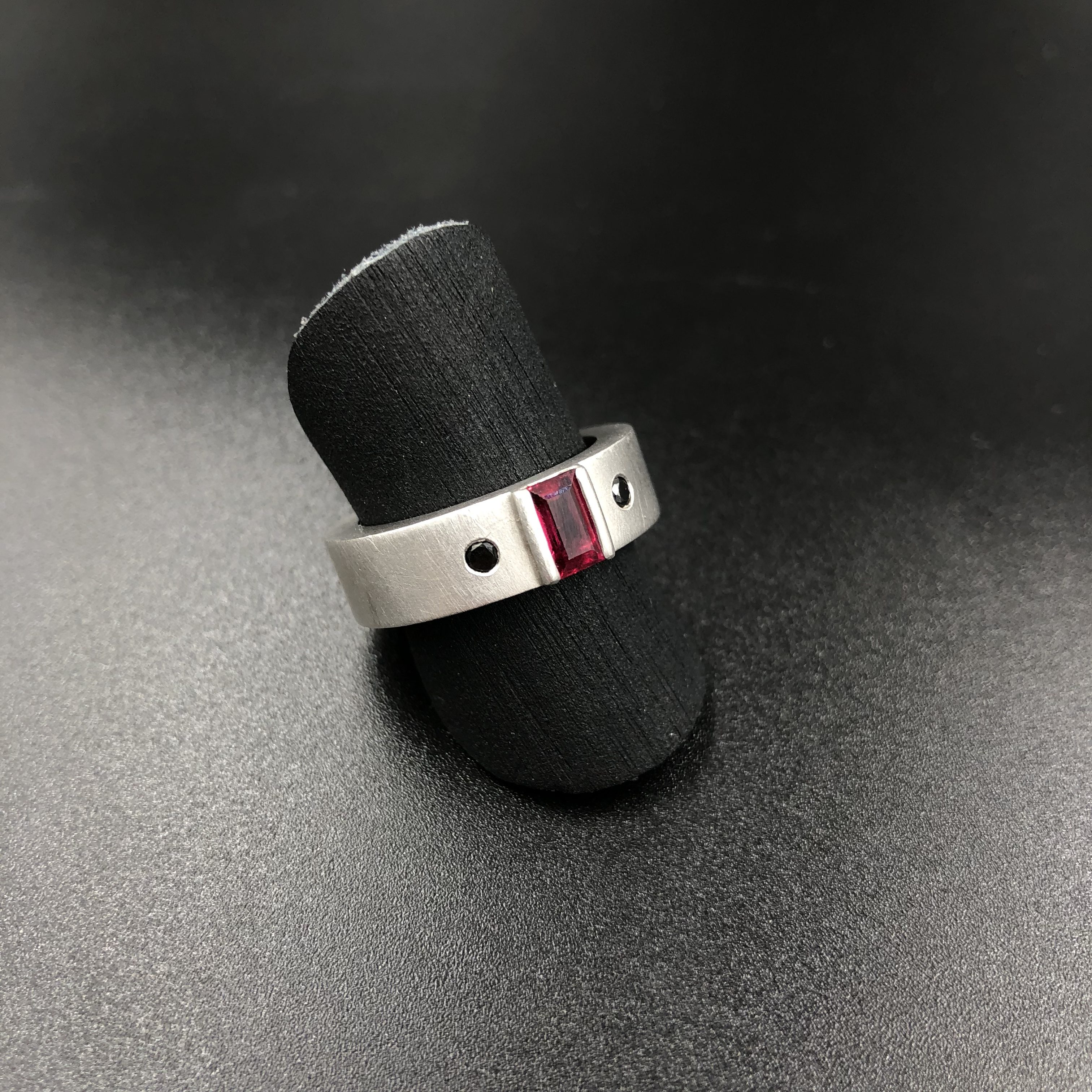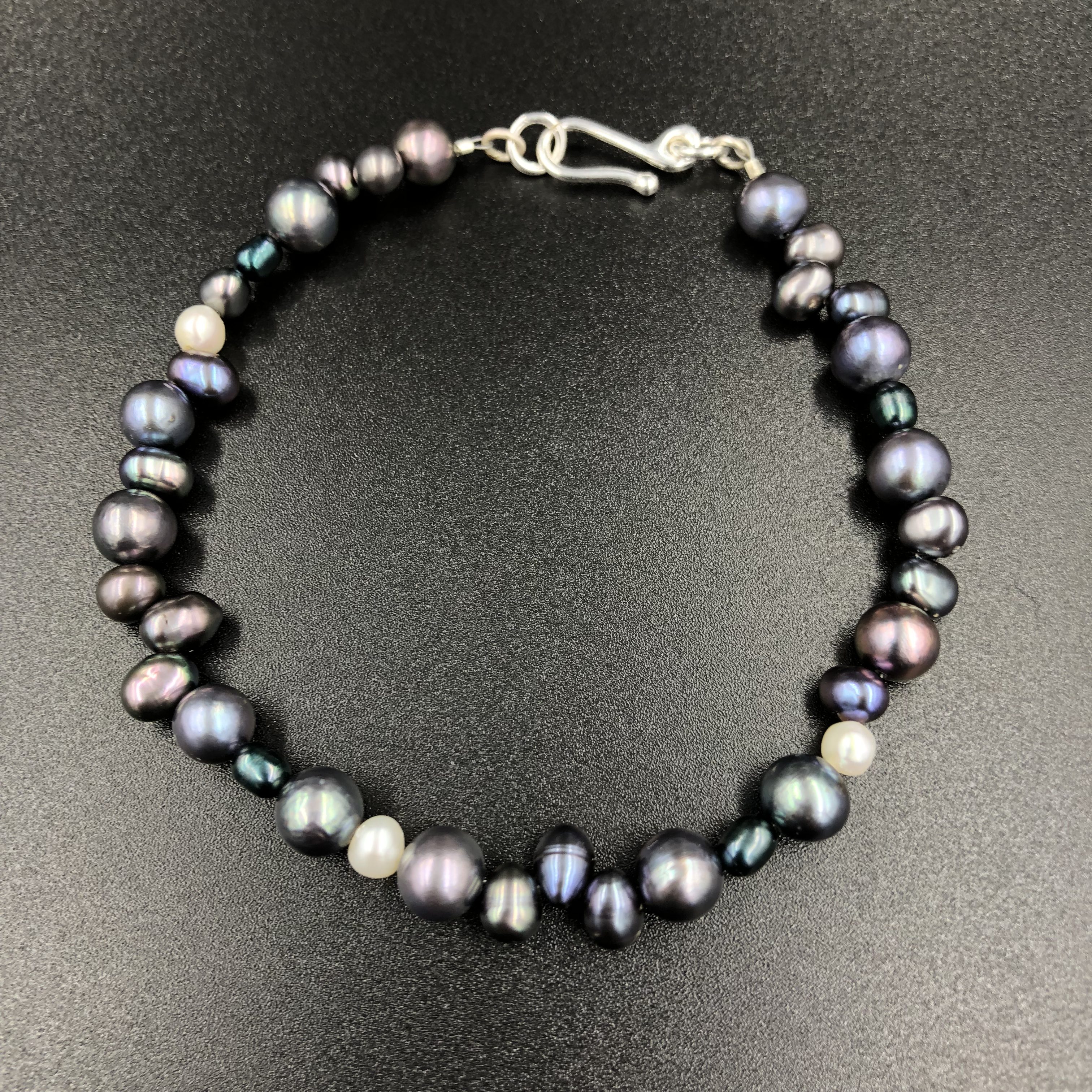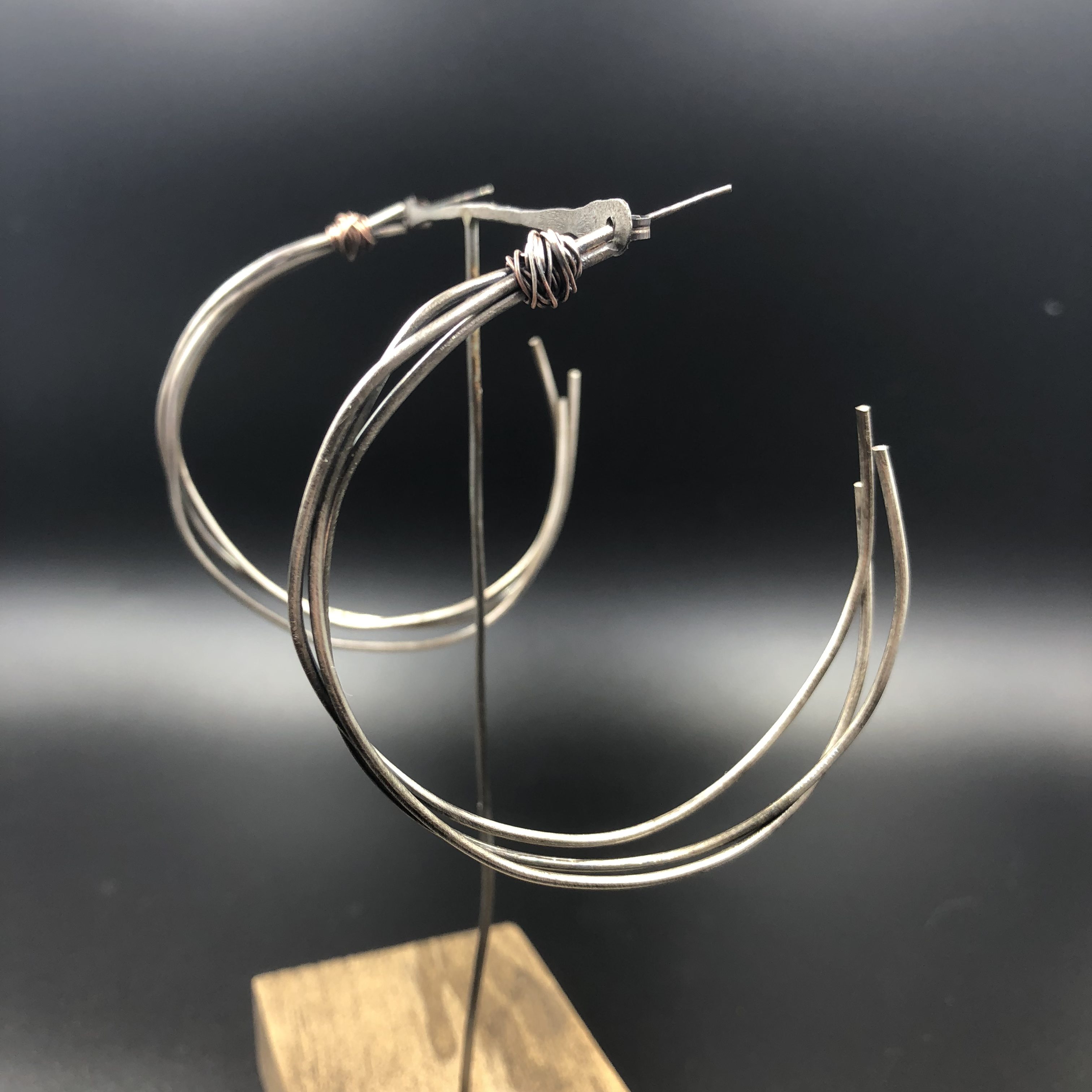The Local newsletter is your free, daily guide to life in Colorado. For locals, by locals.
Jewelry artist, metalsmith, and boutique owner Jamie Hollier believes in being hands-on. Not only does she craft her own line of jewelry—both a collection and custom designs—but she also handpicks every local and international contemporary jewelry artist stocked in her Olde Town Arvada boutique, Balefire Goods. Her sleek, sunlit store, which opened in late 2017, also serves as a community space for both artists and customers, with Hollier hosting a regular lineup of gallery shows, workshops, and in-store events. Read on to find out how Hollier got started in metalsmithing and why supporting traditional jewelry-making is her passion.
5280: I understand you became interested in metalwork through your grandfather. Can you tell me more about that?

JH: My grandfather was a huge influence on my life, especially when I was growing up. I spent a lot of time at my grandparent’s house, both from them watching me after school to just time together as a family. I was always a bit of a tomboy, and loved to spend afternoons with my grandfather in his workshop in the back of his house—a three-car garage full of tools, supplies, and workbenches. He worked as a machinist and foreman, but also loved to create; he’d make anything from new hinges for a door to race cars. I would sit in his shop and we would work on all sorts of projects together. To this day, I use a ton of tools in my studio that I got from him, including an anvil he made me from a railroad track.

Although you studied metalsmithing in college, you went into a career in technology. What brought you back to metalsmithing and jewelry-making?
With my tech companies, I was lucky to work with amazing people and to build software that benefited the greater good. However, I mostly worked as a consultant helping to fine tune the vision and goals of our clients, rather than creating my own thing. To onlookers, I appeared to be a successful entrepreneur and on paper I was, but I felt unfulfilled. After some work with my therapist and feedback from my friends and family, I came to understand that there were things I was craving with my work that I just wasn’t getting on my current path. I wanted to be able to own my process and create something that was my vision, rather than just using my energy to fine tune and craft other people’s visions. I wanted to balance my time creating on a computer with the ability to create a physical product crafted with my hands. And I wanted to get back into creating something more based in art and beauty rather than focusing on logical problem solving. I’m actually really grateful to have taken a step away from metalsmithing and to come back to it now, as I find that I have a different perspective and appreciation for the process that I wouldn’t have gotten without all the experiences I’ve had in other industries.
What made you want to open a boutique?
Artisan jewelry has been a love of mine since I was a teenager going to art shows with my mom and hanging out in my Great Aunt Tettie’s antique shop that was full of jewelry. When I was working in tech, my previous companies took me all over the country to meet with my clients, present at conferences, etc. Wherever I found myself, I would seek out artisan jewelry galleries looking for unique pieces for gifts or to add to my own collection. It struck me that the type of places that I loved to visit when traveling didn’t really exist in the same way in the Denver area and I knew I wanted to create that place.
What made you want to showcase the work of other designers in Balefire Goods instead of just featuring your own work?
One of the main goals for Balefire is to create a home for art jewelry in the Denver area. I wanted to further the understanding of and appreciation for jewelry as an art form. In order to do that, the gallery needed to be focused on jewelry as its primary medium and it needed to highlight a diversity of styles, techniques, and price points from a range of artists in order to best illustrate the breadth and depth of artisan jewelry. That’s one reason why we are also partnering with the Colorado Metalsmithing Association, metalsmiths, and lapidaries—to further our offerings with events such as jewelry-making classes and gemstone education presentations.
Would you say the designers you carry all have a specific aesthetic or is there a common thread that unites them?
The thread that I think ties our designers together is that they each have a unique point of view. We don’t carry artists that are just trying to create whatever follows current trends; they’re more about personal expression and wearable art. While some of our artists are more minimalist and some are more boho or have an organic vibe, each is thoughtful about what they are creating and why. We focus on building collections that are interesting and cool, but with an aesthetic that doesn’t rely on trendiness.
You’re really passionate about slow fashion and slow jewelry—the movement against fast fashion and the amount of product being produced today. Can you talk a bit about that and how the designers you work with are part of that movement?
In high school and college, I really became aware of the ethical and environmental issues surrounding the production of many of our goods, especially clothing. Then toward the end of my undergrad, I was at a blacksmithing conference in Carbondale and I was listening to a group of these amazing artists and makers talking about how blacksmithing was a dying art because most customers didn’t seem to understand the difference between the candle holder from the local big box shop and their work. That’s when I started to really understand the larger impacts of the difference between artist-made goods and mass-produced items.
I believe that artisan goods are a natural fit with the slow fashion movement, which is focused on creating goods that are meant to last and have been created in an ethical and environmentally responsible way. The artists we carry focus on using ethically sourced and recycled materials such as recycled silver, alluvial gold, and recycled diamonds. The pieces we carry are handcrafted by the artists or their assistants in their own workshops and studios. Also, the pieces we sell are made to last and to be cherished for years to come and eventually to be passed down as an heirloom. I think we can all benefit individually and as a society when we invest in fewer, higher quality things that bring us joy.
What direction is your own jewelry line going in now?
My problem is that I don’t really have a direction these days, which is actually what I love. I feel like I’m producing a grouping of one-of-a-kind pieces rather than a specific collection or line. One of the great things about owning a gallery like Balefire Goods is that I can just sit down at my bench and let the materials decide what they want to be one day, make pieces inspired by old sketches the next day, and then recreate some old favorites that have been on my mind another day. I love not having to follow a line or a design aesthetic but just being able to play and create, which is what I think art is all about.
[The exception to this is] our collection of commitment rings called Kindle. I’m much more intentional when it comes to commitment jewelry such as wedding and engagement rings. As a designer, you need to be more thoughtful about the techniques and designs you employ in order to ensure that your pieces will look good, be comfortable, and will hold up to everyday wear for many years, if not decades. We’re planning to add new rings to the Kindle line each year, and we’re already starting to work on designs for 2019.
You’ve really created a boutique with a community focus. Why is that so important to you?
Throughout my professional career, my work has had a focus on the greater good. I’ve always believed that if everyone focused on work that positively impacts others, we could create real change. While at my tech companies, I was able to be a part of work that helped improve access to healthcare, increase digital literacy, further access to educational resources, etc. However, there was distance between the impact of the work I was a part of and my life and community. When I was thinking about my goals for Balefire Goods, I was excited to be able to be a part of work that I saw as being about the greater good in a much more direct and local way, so we’ve focused on supporting and working with nonprofits and organizations that benefit the causes that we believe enrich our world.
Balefire Goods, 7417 Grandview Ave., Arvada; 720-479-8434; balefiregoods.com




